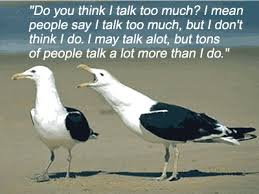

When I was a young teacher, I was afraid of everything. I was afraid of making mistakes in front of my students. I was afraid my classroom would be out of control. I was worried that the jacket I was wearing made me look dumb (it had shoulder pads, so…). Most of all, I was afraid of silence.
As a perceived antidote, I put on music while students worked. I read books or stories aloud. I walked the aisles while students worked, repeating directions, reminders, blah, blah, blah.
The problem for me was that the silence was uncomfortable. Countless pairs of eyes looked at me, looked at each other. If eyes could shrug, my students would be shrugging at each other from across the room, the little thought bubbles above their head saying, “What does she want from me?!”
I tried to give them time, but failed to realize that in order to give them time, I had to stop talking completely. Students need time to think on paper and with each other: Sketch. Doodle. Draft. Discuss. Debate. Determine. My voice is the last thing they should hear when they are working to sort out answers to important questions.
My voice determines who has control in the classroom. It’s true that learning floats on a sea of talk, but that voice shouldn’t be mine.

With that gag order in mind, here are some strategies I’m using to reduce my voice, to stop talking ,and to open more space for the voices and thoughts of my students.
- Give oral directions once. Really. If we tell our students that directions are coming and get their attention, once is enough.
- Support directions with a visual backup. Leave them on the projector or provide written copies.
- When releasing students to work alone, in pairs, or in groups, Stop Talking. Make yourself available by roaming, smiling, making eye contact, but don’t offer assistance unless it’s requested.
- Stop “adding on” while students work. Some teachers continue to say “remember to….” or “be sure you….” If those add-ons are important, they should be in the directions.
- Resist answering your own questions. If students aren’t answering questions posed to the whole class, they need a format or structure for conversation.
The less I talk and the more concise I become, the more I open space for student learning. If noticing how much we eat works to help us lose weight, noticing how much we talk will make us mindful of our chatter.


